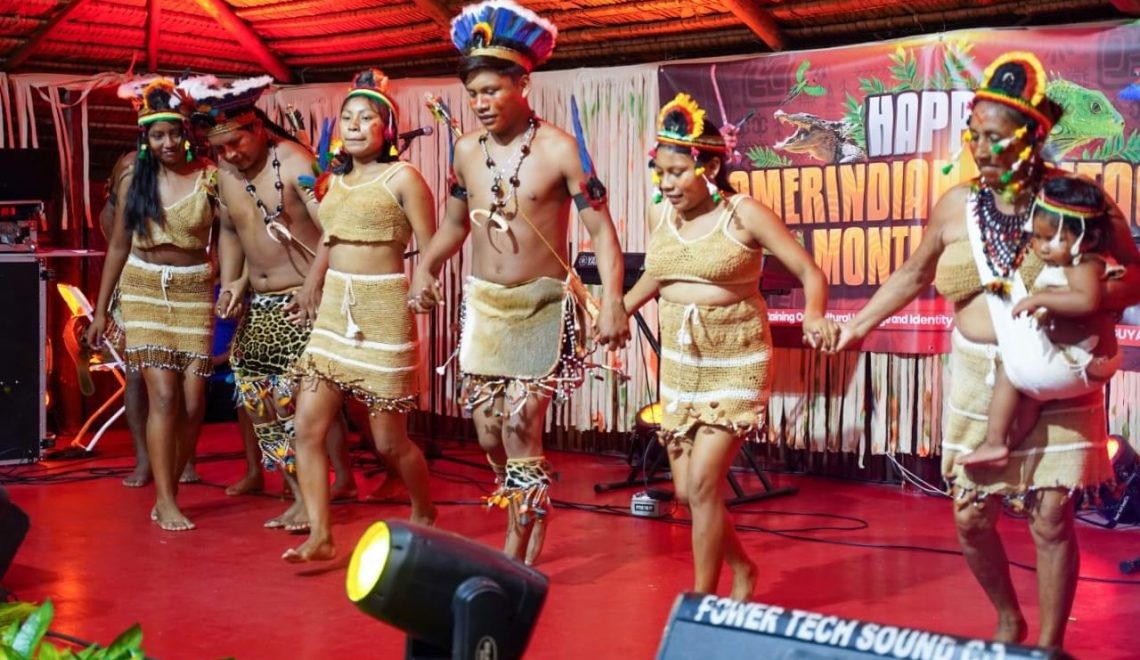Amerindian Heritage Month: Journeying Into the Heart of Guyana’s First Peoples


Every September, Guyana pauses, celebrates, and listens. Amerindian Heritage Month is not only a tribute to the country’s First Peoples—it is an invitation to rediscover the land through their eyes. In 2025, the celebrations unfolded under the theme “Igniting Unity, Celebrating Progress, Advancing Our Culture,” a timely reminder that Indigenous heritage is not a relic of the past but a living force shaping our national identity and development agenda.
The month opened with a renewed sense of pride and purpose. A national feature on the origins of Amerindian Heritage Month set the tone for what was to come, followed by a children’s poem competition that brought young voices into the conversation. Soon after, the Amerindian Village at Sophia came alive with the annual cultural extravaganza, where traditional dances, drumming, and storytelling highlighted the vitality of Indigenous heritage. A bustling craft and cuisine fair showcased everything from cassava bread and Pepperpot to tibisiri crafts and intricately woven baskets. The Umana Yana hosted an interfaith service that underscored unity among Guyana’s diverse peoples, while the National Gallery of Art featured an exhibition of Indigenous art, connecting the aesthetic traditions of the past with the bold expressions of today’s Indigenous artists.
Throughout September, educational events deepened the nation’s understanding of Indigenous history and contributions. Demonstrations of cassava bread making were shared across social platforms, offering a glimpse into traditional knowledge systems passed down through generations. Schools welcomed guest lecturers who highlighted the life and legacy of Steven Campbell, Guyana’s first Indigenous parliamentarian, as well as broader lessons on Indigenous identity and nation-building. Communities also participated in fitness walks, heritage sports, and a much-anticipated heritage safari. The month concluded with “Amerindian Got Talent,” a lively social media showcase that brought youthful creativity to the forefront.
While these events celebrate culture, music, craft, and cuisine, Amerindian Heritage Month also invites reflection on the deeper connection between the First Peoples and the Guyanese landscape. Long before the formation of the modern state, Indigenous nations were navigating the rivers, naming the mountains, cultivating cassava, and developing knowledge systems precisely tuned to the environment. Their relationship with the land is spiritual, practical, and rooted in a profound understanding of balance. In a world grappling with climate change, Guyana’s First Peoples stand out as guardians of one of the planet’s last great green sanctuaries.
During this year’s celebrations, Prime Minister Brigadier (Ret’d) Mark Phillips emphasized that Indigenous communities are essential partners in national development and in global climate action. As he noted, heritage is a “living, breathing force” shaping Guyana’s present and future—a force that teaches stewardship and harmony with the environment. Under the Low Carbon Development Strategy (LCDS), Indigenous communities will now receive no less than 15 percent of all carbon credit revenues, ensuring that financial benefits flow directly to those who protect Guyana’s forests.
Minister of Amerindian Affairs, Pauline Sukhai, echoed this sentiment at the official launch of the month’s activities. She highlighted that Amerindian culture is not simply another element within Guyana’s diversity; it is the foundation upon which the national identity rests. She spoke passionately about the strides made in infrastructure, education, and internet access in hinterland communities—investments that have expanded opportunities for Indigenous families while supporting the preservation of traditional knowledge, languages, and artistic expression. As she reminded the nation, these elements are “vibrant and dynamic threads woven into the fabric of our national identity,” deserving of both recognition and protection.
Amerindian Heritage Month also shines a light on the essential role every ethnic group plays in Guyana’s cultural fabric. Guyana’s story is one of convergence: Indigenous, African, Indian, Portuguese, Chinese, and European influences blending to form a nation rich in diversity. Celebrating the First Peoples deepens this understanding and shows how unity and respect remain vital cornerstones of national development. Progress becomes meaningful only when all communities move forward together.
For travellers seeking authenticity and cultural immersion, Amerindian communities across the hinterland offer some of the most enriching experiences in the region. In villages such as Rewa, Surama, Fair View, Moraikobai, and Warapoka, visitors are welcomed into a rhythm of life that has endured for millennia. Imagine waking to the calls of macaws as dawn breaks over the Rupununi savannahs, or learning to prepare cassava bread alongside women who have mastered the skill through generations of practice. Travellers can glide down the Rewa River at sunset in a traditional canoe, watch giant river otters slip through the water, or sit in a village benab listening to stories about the creation of rivers, the power of ancestral spirits, and the meaning of community. The experience is not simply observational; it is participatory. Guests are invited to weave baskets, explore forest trails, identify medicinal plants, and learn Indigenous words that capture concepts modern languages often cannot.
Such journeys reveal a truth long known to Indigenous peoples: the land is alive, responsive, and interconnected with human wellbeing. Visitors who travel into the interior return with a deeper appreciation for harmony, resilience, and balance—values that Guyana continues to champion as it develops.
Amerindian Heritage Month, though celebrated in September, carries a message that resonates year-round. It reminds us that Guyana’s future is strongest when built on the wisdom, traditions, and contributions of its First Peoples. It affirms that every ethnic group enriches the nation’s identity. And it invites travellers, both local and international, to explore the places where culture, landscape, and heritage are woven into daily life.
To journey into Guyana’s Indigenous communities is to journey into the country’s soul. It is to experience unity in diversity, progress guided by tradition, and culture that continues to shape the nation’s path forward.
